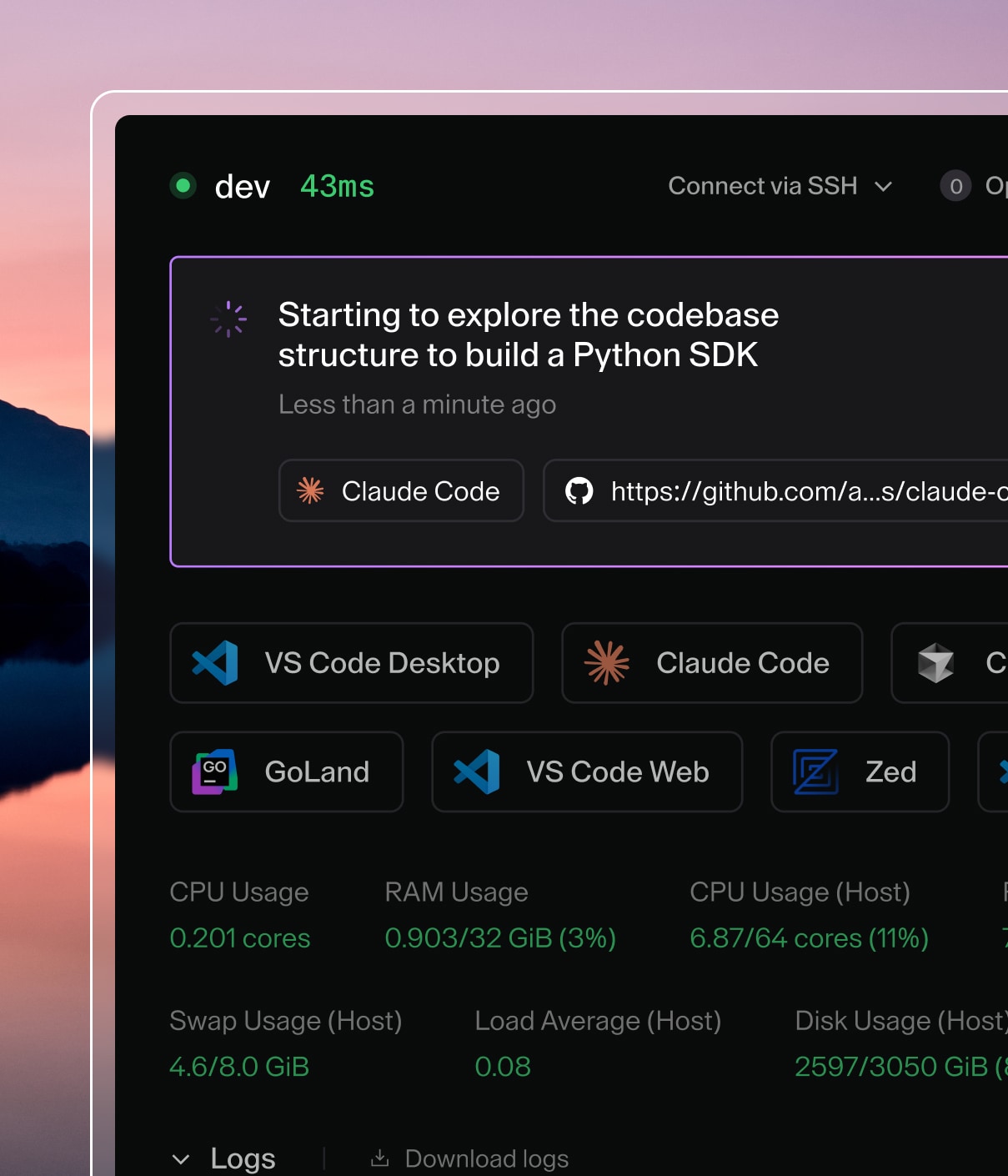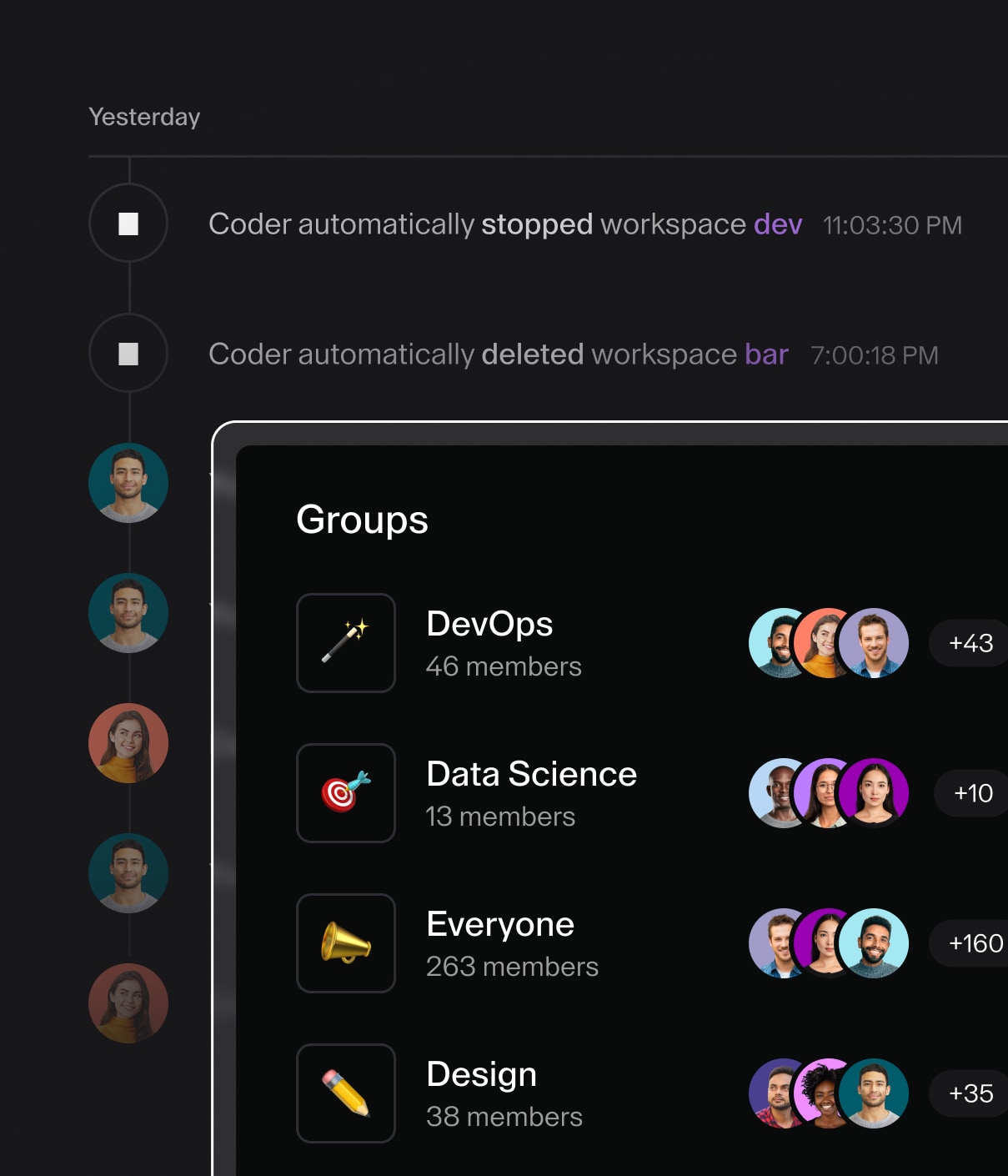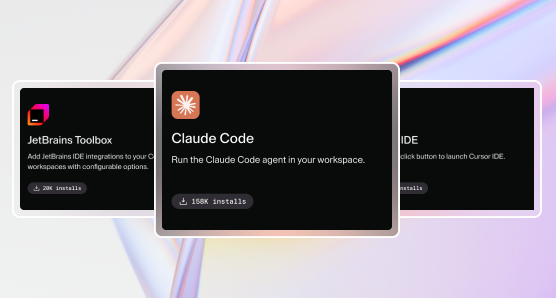Termux
Install
- Get Termux from F-Droid.
- Run
pkg install tur-repo - Run
pkg install code-server - You can now start code server by simply running
code-server.
NPM Installation
-
Get Termux from F-Droid.
-
We will now change using the following command.
termux-change-repo
Now select Main Repository then change repo to Mirrors by Grimler Hosted on grimler.se.
- After successfully updating of repository update and upgrade all the packages by the following command
pkg update
pkg upgrade -y
- Now let's install requirement dependancy.
pkg install -y \
build-essential \
binutils \
pkg-config \
python3 \
nodejs-lts
npm config set python python3
node -v
you will get Node version v22
-
Now install code-server following our guide on installing with npm
-
Congratulation code-server is installed on your device using the following command.
code-server --auth none
- If already installed then use the following command for upgradation.
npm update --global code-server
Upgrade
- Remove all previous installs
rm -rf ~/.local/lib/code-server-* - Run the install script again
curl -fsSL https://code-server.dev/install.sh | sh
Known Issues
Git won't work in /sdcard
Issue : Using git in the /sdcard directory will fail during cloning/commit/staging/etc...
Fix : None
Potential Workaround :
- Create a soft-link from the debian-fs to your folder in
/sdcard - Use git from termux (preferred)
Many extensions including language packs fail to install
Issue: Android is not seen as a Linux environment but as a separate, unsupported platform, so code-server only allows Web Extensions, refusing to download extensions that run on the server.
Fix: None
Potential workarounds :
Either
-
Manually download extensions as
.vsixfile and install them viaExtensions: Install from VSIX...in the Command Palette. -
Use an override to pretend the platform is Linux:
Create a JS script that patches process.platform:
// android-as-linux.js
Object.defineProperty(process, "platform", {
get() {
return "linux"
},
})
Then use Node's --require option to make sure it is loaded before code-server starts:
NODE_OPTIONS="--require /path/to/android-as-linux.js" code-server
⚠️ Note that Android and Linux are not 100% compatible, so use these workarounds at your own risk. Extensions that have native dependencies other than Node or that directly interact with the OS might cause issues.
Extra
Keyboard Shortcuts and Tab Key
In order to support the tab key and use keyboard shortcuts, add this to your settings.json:
{
"keyboard.dispatch": "keyCode"
}
Create a new user
To create a new user follow these simple steps -
- Create a new user by running
useradd <username> -m. - Change the password by running
passwd <username>. - Give your new user sudo access by running
visudo, scroll down toUser privilege specificationand add the following line after rootusername ALL=(ALL:ALL) ALL. - Now edit the
/etc/passwdfile with your command line editor of choice and at the end of the line that specifies your user change/bin/shto/bin/bash. - Now switch users by running
su - <username>
- Remember the
-betweeensuand username is required to execute/etc/profile,
since/etc/profilemay have some necessary things to be executed you should always add a-.
Install Go
- Go to https://golang.org/dl/ and copy the download link for
linux armand run the following:
wget download_link
- Extract the downloaded archive. (This step will erase all previous GO installs, make sure to create a backup if you have previously installed GO)
rm -rf /usr/local/go && tar -C /usr/local -xzf archive_name
- Run
nano /etc/profileand add the following lineexport PATH=$PATH:/usr/local/go/bin. - Now run
exit(depending on if you have switched users or not, you may have to runexitmultiple times to get to normal termux shell) and start Debian again. - Check if your install was successful by running
go version
Install Python
Run these commands as root
- Run the following commands to install required packages to build python:
sudo apt-get update
sudo apt-get install make build-essential libssl-dev zlib1g-dev \
libbz2-dev libreadline-dev libsqlite3-dev wget curl llvm \
libncursesw5-dev xz-utils tk-dev libxml2-dev libxmlsec1-dev libffi-dev liblzma-dev
- Install pyenv from pyenv-installer by running:
curl -L https://github.com/pyenv/pyenv-installer/raw/master/bin/pyenv-installer | bash
- Run
nano /etc/profileand add the following:
export PYENV_ROOT="/root/.pyenv"
export PATH="/root/.pyenv/bin:$PATH"
eval "$(pyenv init --path)"
eval "$(pyenv virtualenv-init -)"
- Exit and start Debian again.
- Run
pyenv versionsto list all installable versions. - Run
pyenv install versionto install the desired python version.The build process may take some time (an hour or 2 depending on your device).
- Run
touch /root/.pyenv/version && echo "your_version_here" > /root/.pyenv/version - (You may have to start Debian again) Run
python3 -Vto verify if PATH works or not.If
python3doesn't work but pyenv says that the install was successful in step 6 then try running$PYENV_ROOT/versions/your_version/bin/python3.


